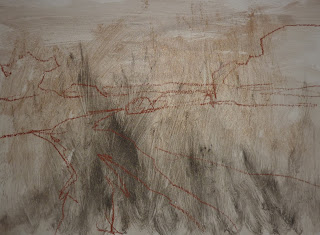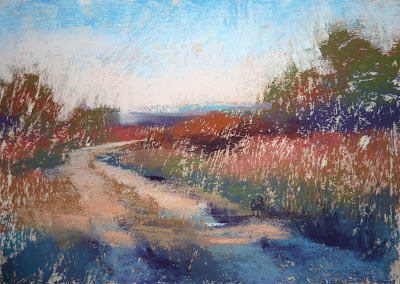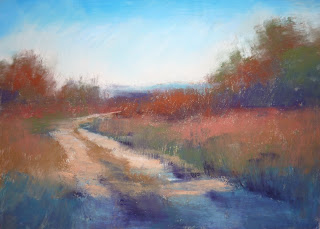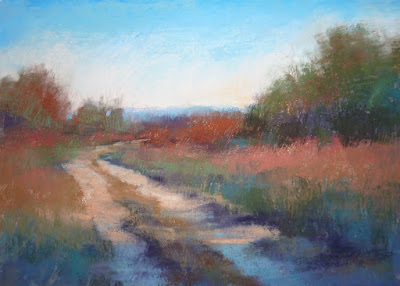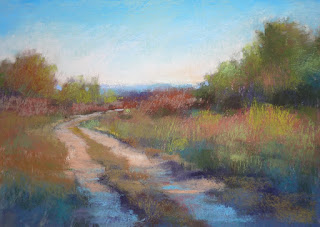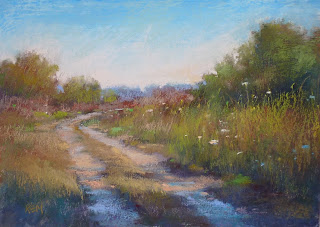 |
| 'Bluebonnet Spring II' 8x10 pastel ©Karen Margulis sold |
I usually have a rule for my plein air paintings. I do not allow myself to touch them back in the studio. I leave them alone so I can learn from them. If I try to fix my 'mistakes' or try to make it better I will often destroy the freshness and authenticity that they have. I prefer to paint a new variation based on the study. I make note of the things I would change in the study and then start fresh. It is a much better learning experience.
Every once in awhile I break my rule!
 |
| The original plain air painting....a demo from my Texas workshop |
Not one to throw out good paper I decided to use the bones of this painting to create a new interpretation.
- I found a photo taken near the demo location. It was a bit closer in and included some bluebonnets.
- I brushed out some of the pastel and sprayed the bottom half with workable fixative.
- Now primed for new pastel I let the photo guide my new interpretation.
The new interpretation works because I already had big simple shapes and a solid value map. All it needed were a few adjustments to the trees and bushes and the addition of bluebonnets in the foreground.
 |
| a photo of a scene from the demo location |
 |
| Brushed out, sprayed with fixative and ready to go! |
I am returning to the HillCountry this April 7-9 for my 3rd annual plein air workshop. It will be an intimate group this year and I'd love for you to join us. Any level of experience is fine. We always have a great time in this beautiful corner of the world! Email me to register.
*******I need your help! ************




























